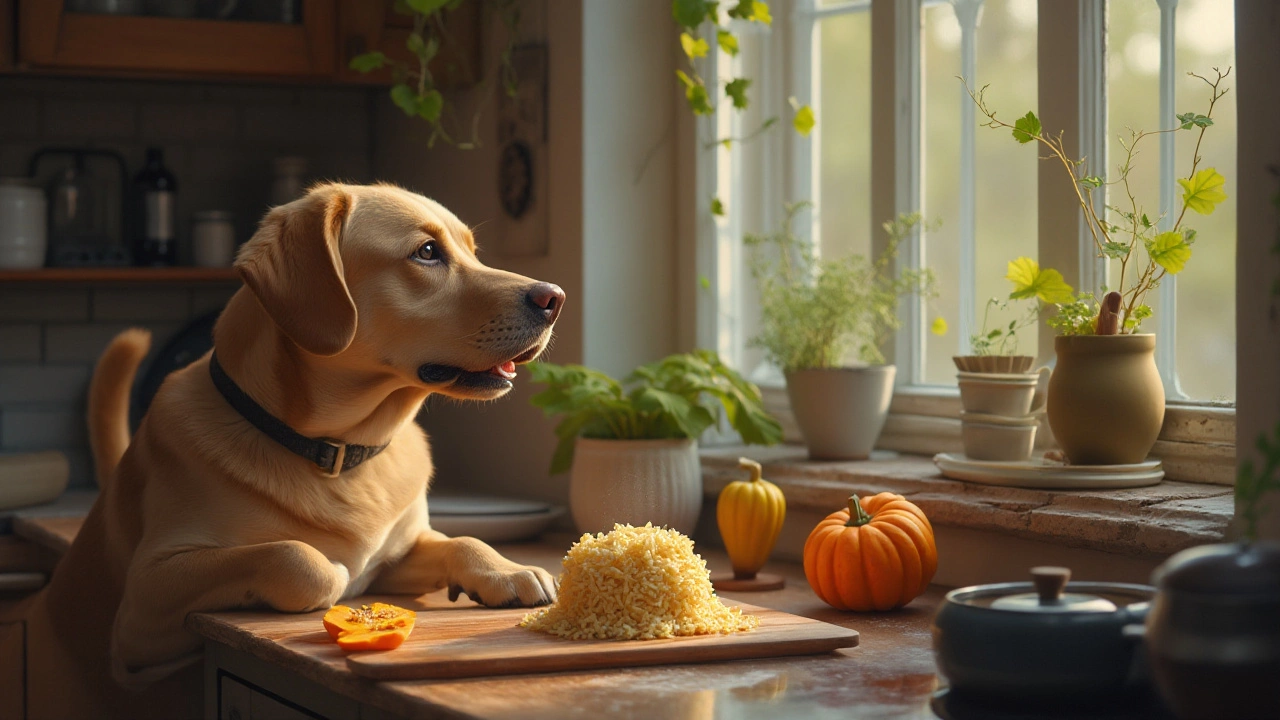Rice for Dogs – Simple Guide to Feeding Your Pup This Grain
If you’ve ever wondered whether you can share a bit of rice with your dog, the answer is yes – if you do it the right way. Rice is a bland, easy‑to‑digest carb that can help balance a homemade meal or soothe a tummy upset. Below you’ll find the basics you need to know before you start scooping it into your dog’s bowl.
Why Rice Can Be Good for Dogs
Plain white or brown rice provides quick energy without a lot of fat. It’s especially useful when a dog has a sensitive stomach because the grain is low in allergens and gentle on the gut. When mixed with a protein source like boiled chicken, it creates a balanced, homemade meal that many owners use during recovery from illness.
Rice also adds bulk to a meal, which can help a dog feel full longer. This can be handy if you’re trying to control weight or need a low‑calorie filler. Just remember that rice isn’t a complete source of nutrition – it lacks essential amino acids, vitamins, and minerals that dogs need.
How to Serve Rice Safely
Start with plain, cooked rice. Rinse a cup of rice under cold water, then cook it in a pot with two cups of water. No salt, butter, oil, or seasonings. Once it’s soft and the water is absorbed, let it cool to room temperature.
Mix the rice with a protein in a 2:1 ratio – two parts rice to one part meat. For example, ½ cup cooked rice with ¼ cup boiled chicken works well for a medium‑size dog. Add a spoonful of veggies like carrots or peas if you like, but keep them plain too.
Portion size matters. A general rule is about ½ cup of cooked rice per 20 lb of body weight per meal. Adjust up or down based on your dog’s activity level and any weight goals. Over‑feeding rice can lead to extra calories and a bloated belly.Watch for signs of intolerance. Some dogs may be sensitive to grain and develop itchy skin or digestive upset. If you notice loose stools, gas, or itching after a rice meal, pause and talk to your vet.
Store leftovers in an airtight container in the fridge for up to three days. Reheat gently before serving, but never give cold rice straight from the fridge if your dog prefers it warm.
Finally, always check with your vet before making rice a regular part of the diet, especially for puppies, senior dogs, or dogs with health conditions. Your vet can confirm the right balance of nutrients and help you avoid hidden pitfalls.
With these simple steps, rice can become a useful, soothing component of your dog’s meals. Keep it plain, serve the right amount, and watch your pup enjoy a calm, happy tummy.

Pumpkin vs Rice: Which Is Better for Dogs with Diarrhea?
Choosing the right food for dogs with diarrhea can be crucial in aiding their recovery. This article explores the benefits of pumpkin and rice, two popular remedies, offering insights on their nutritional value and how they help with digestion. You'll find tips on preparing these foods for your furry friend and which option might suit your dog's specific needs best. With easy-to-digest advice and interesting facts, pet owners can make informed decisions when dealing with their dog's digestive troubles.
View more